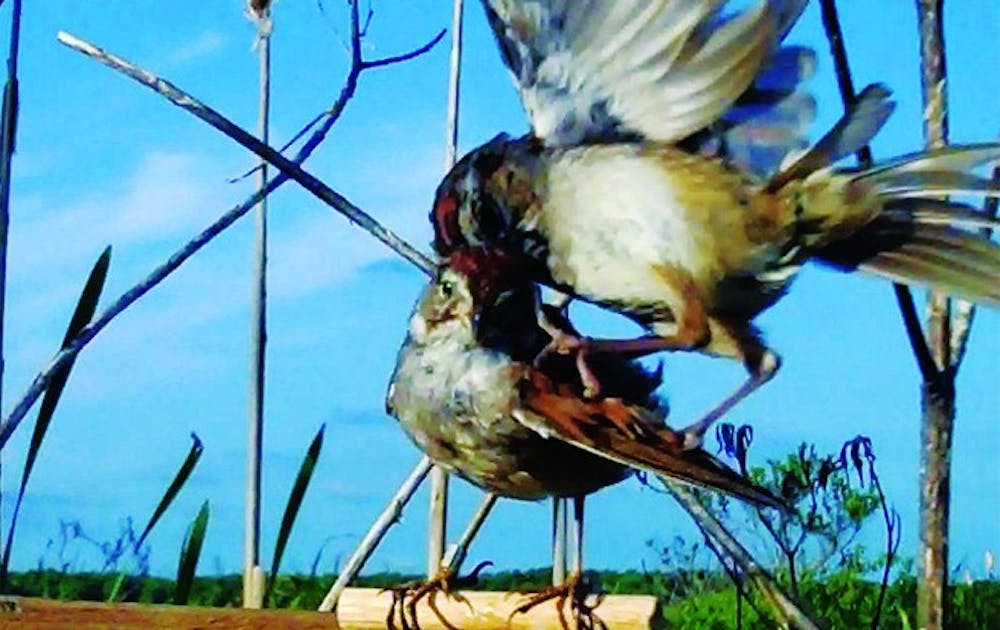A team of Duke undergraduates working with the Nowicki Lab created a lifelike robotic sparrow to test a theory of angry bird behavior.
The resulting study showed that male swamp sparrows flap their wings aggressively at rivals, as if “flipping the bird.” Steve Nowicki, dean and vice provost of undergraduate education, oversaw the project in his lab. In the course of research, a team of Duke engineering students, led by David Piech, Pratt ’12, while he was an undergraduate, built a robot bird to mimic the aggressive wing flaps they had observed in the wild.
In homage to the 1987 cult classic movie “RoboCop,” the lab dubbed the bird RoboSparrow, Nowicki said.
Piech said that the main goal of the project was to make a machine that could create the offensive wing actions while still being able to fit into the body cavity of the swamp sparrow. The birds appear larger than their actual size because most of their mass is feathers. This made it difficult to create machinery that can fit into the sparrow.
“In reality their body cavities are tiny—not much bigger than that of a hummingbird,” Piech said.
The robot bird needed to have a wing flaps at 10 beats per second in order to mimic the signal. The engineers considered several solutions, such as using pneumatic actuation or electronic motors, but they finally decided that a linear motor would be the best option.
Linear motors are electric motors that flip back and forth in a linear trajectory. Since the lab did not have the budget to purchase a commercially-made linear motor, they designed and built one from scratch.
“It ended up that the man hours to build a motor were more expensive than the actual cost [of a motor], but I was one of the head researchers, so man hours were free in the lab,” Piech said.
The team started off with a simple concept design and then created a computer-generated plan. They worked with the Duke Motorsports team’s computer-controlled milling machine and with the mechanical engineering department’s 3D printer.
They then worked with Jason Dudley’s Whistling Wings Taxidermy to fit the tiny motor into the carcass of a swamp sparrow that the researchers had brought from the wild.
“We cut it open, pulled out all the stuff, and the taxidermist very carefully stretched the skin over the mechanical skeleton we designed,” Piech said.
The lab did most of its work during songbird mating season in May or June, and the researchers took the signaling bird to the field to test their hypothesis. The lab’s videos from the experiment show wild songbirds aggressively attacking the RoboSparrow.
“We were basically simulating an intrusion on a rival bird,” said Rindy Anderson, a research associate at the Nowicki Lab.
Piech said he was excited to finally see the bird out in the field, especially since other wild birds thought the RoboSparrow was a real sparrow—so they physically attacked it.
“It’s really encouraging because it means we did our jobs,” he said. “We were actually able to convince the other biological birds that this was an intruder. We fooled them into thinking that one of their own brethren was actually very angry at them.”
After research was completed, the RoboSparrow, scarred from battle, stopped working. Nowicki said that the discoveries really open up the field of bird communication, but further funding would be needed if they were to continue such experiments.
Get The Chronicle straight to your inbox
Signup for our weekly newsletter. Cancel at any time.

